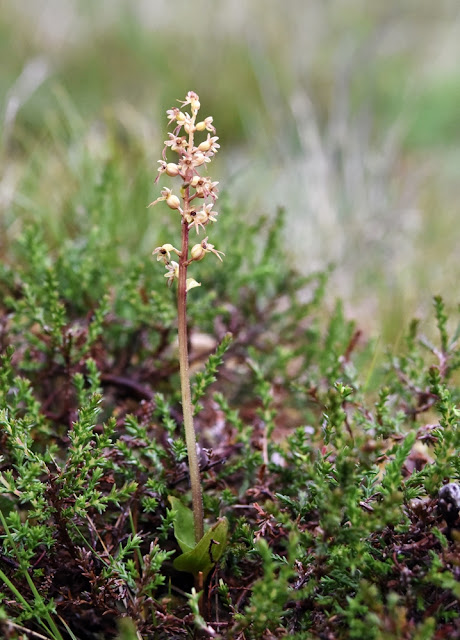Hawk Owls
 |
| An adult Hawk Owl Surnia ulula watches over its shoulder |
There is an abundance of voles, Grey-sided Voles
Myodes rufocanus in northern Norway this spring, so there are lots of raptors and owls breeding. Two species I have been seeing are Rough-legged Buzzards
Buteo lagopus and Hawk Owls, both well-known specialist feeders on small rodents. The buzzards hunt mostly over the high open tundra and the owls in and around the woodland, but this family of owls were hunting around the edge of a small hamlet set in birch forest.
 |
| The owl brood were perched around this building; in the trees, scrub and wooden structures |
The adult female owl was perched high above her brood. She was up on wires, while her chicks were perched in birch scrub, one on the roof of a hut and one on the frame of a lavvu. These owls hunt by daylight, which in such a place above the arctic circle is no problem. There is abundant food and 24 hours of daylight to hunt. So the owls have large broods. There were four chicks at least in this brood, but there could have been perhaps seven or more.
 |
| An adult owl sits atop the frame of a lavvu, a Sami tent-type temporary dwelling |
While the female was guarding the chicks, the male was away hunting, returning frequently with voles for the chicks. I have been seeing a few voles per day while walking through the local forests, but these owls were catching several per day, how many did they see per day. They are such efficient hunters, they probably saw many more than they caught, looking down from their high hunting perches.
 |
| A close up of the same bird |
I have seen hawk owls before, mostly at a distance and in thick extensive forest, so it was a special experience to stand amongst them as they carried on their business regardless of my presence. And they really are such wonderful birds.
 |
| An adult bird brings a vole to feed a chick |
Hawk owls can be aggressive in defense of their chicks, but fortunately these birds were not. They can attack humans around the head and draw blood with their very, very sharp talons. Another reason to admire them. And respect them.
 |
| One of the fledgling owl chicks |
While watching them, I thought how easy it was to approach the chicks without causing them to fly away. Meanwhile, I stayed constantly aware that the adults were vigilant and could swoop at me if they wanted to. To them, I was easy to approach and cause to flee. And I would have done so if they had.
 |
| A wink that only owls can do so well |

























